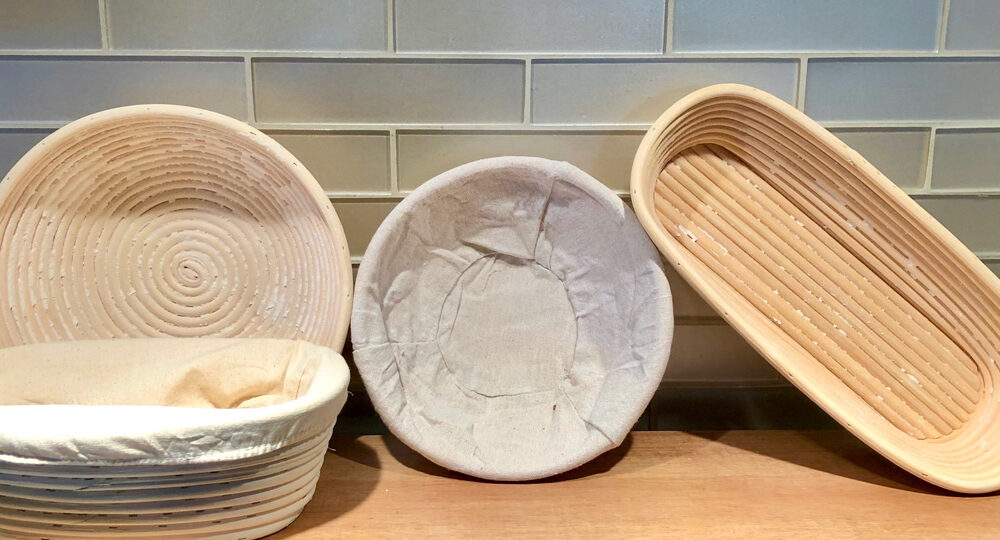
Home bread baking is on the rise, and with it, the sale of all the equipment that make it easier and in many cases better. The Banneton Proofing Basket is one piece of the bread making experience that I think is well worth the investment. There are several formulas for caring for these baskets, and below are the steps I go through with my baskets. It has worked extremely well for me, and should work equally well for you.
Seasoning your Banneton
When you first get your basket, take off the canvas cover and lightly spritz the basket on both inside and outside. Allow the basket to dry at least 12 hours, or over night.
When the basket is completely dry, liberally dust the inside, both bottom and sides with a mixture of 50% rice flour and 50% all purpose flour.
Your basket is now ready to use.
Maintaining your Banneton
After you have seasoned your basket, you should never use water on it again. After each use just simply tap out the excess flour, and if you have a spot of dried bread dough, use a stiff kitchen brush to dislodge it. Just continue dusting it with the 50%/50% flour mixture every time you use it. I like to equate care and handling with that of my cast iron pans, in that the more you use it, the better it gets.
Using your Banneton
Your bread dough is placed in your Banneton for the final rise, and there are two methods. If you would like your loaf to show the marks of the reeds of the basket, (like the photo on the Crusty Rye Bread recipe) liberally dust both your bread dough and the inside of the basket with the rice flour/all purpose flour mix. Place the dough in the basket, and lightly cover with plastic wrap or, as I do, cover it with the canvas covering and allow it to rise until doubled in size. Depending on the bread recipe and the temperature of your home, this takes anywhere from 30 minutes to just over an hour. Now, gently “dump” your risen dough upside down into your preheated dutch oven* or bread pan. The underside becomes the top that shows the imprint of the reed pattern.
The Second Way
If you prefer a smooth loaf, or one you can score using your Bread Lame, then place the dough in the Banneton using the canvas liner. You will still need to flour the surface a bit, though the issue of dough sticking is not as common when using the canvas. Using the same technique, gently “dump” your risen dough into your bread pan or pre heated dutch oven.
Note *
To use the Dutch oven technique, place the empty Dutch Oven in a 400 degree Convection and 425 degree Standard oven and heat for 30 minutes. When your bread dough is ready to bake, line the dutch oven with parchment paper, and “dump” the risen dough onto the parchment. The paper will prevent the sides and bottom of your bread from scorching.